Leccinum pseudoscabrum (Kallenb.) Šutara - Hazel Bolete
Phylum: Basidiomycota - Class: Agaricomycetes - Order: Boletales - Family: Boletaceae
Distribution - Taxonomic History - Etymology - Identification - Culinary Notes - Reference Sources
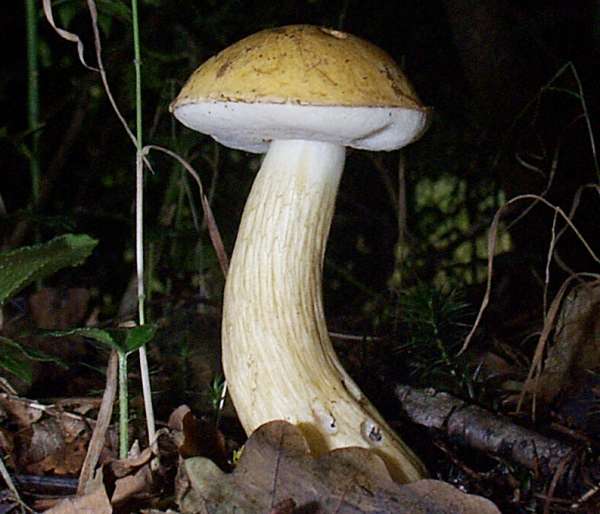
Despite its common name Hazel Bolete, Leccinum pseudoscabrum is most often found beneath Hornbeam trees, although, as the common name implies, it does indeed sometimes occur with Hazel. I see this bolete under hedgerows as well as deep inside woods.
Formerly much better known as Leccinum carpini, this distinctive bolete fruits very early in the year: in Wales I have seen Hazel Boletes as early as the middle of June.
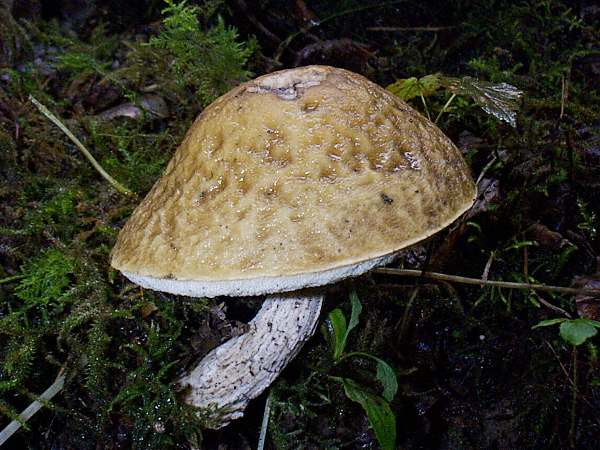
Distribution
Widspread but far from common in Britain and Ireland, Leccinum pseudoscabrum is also found in many parts of northern and central Europe.
Taxonomic history
The basionym of this species dates from a 1935 publication by German mycologist Franz Joseph Kallenbach (1893 - 1944), who gave it the scientific name Boletus pseudoscaber. It was Czech mycologist Josef Šutara (b. 1943) who, in 1989, established the currently-accepted scientific name Leccinum pseudoscabrum.
Synonyms of Leccinum pseudoscabrum include Boletus scaber var. carpini R. Schulz, Boletus pseudoscaber Kallenb., Boletus carpini (R. Schulz) A. Pearson, Leccinum carpini (R. Schulz) M.M. Moser ex D.A. Reid, and Krombholziella pseudoscabra (Kallenb.) Šutara.
Etymology
Leccinum, the generic name, is derived from an old Italian word meaning fungus. The specific epithet pseudoscabrumcomprises the prefix pseudo- meaning almost or similar to, and the suffix -scabrum meaning with scabers - a reference to the roughly scaly or scurfy surface of stems of this mushroom.
Identification guide
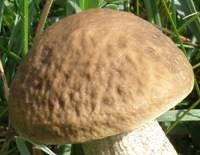 |
CapSmaller than many Leccinum mushrooms, the cap diameter ranges between 4 and 9cm in diameter when fully expanded, remaining broadly convex rather than flattening out completely. The surface is usually wrinkled and sometimes cracked. When moist the cap surface is tacky or slightly greasy, drying to dull matt or very finely fleecy. Cap colour ranges from yellowish-brown to olive-buff or olive-brown. The cap flesh turns vinaceous when cut and exposed to air. |
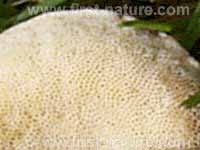 |
Tubes and PoresThe creamy-white tubes terminate in pores typically 0.5mm in diameter that are also creamy white. The pores turn slowly blackish when they are bruised. |
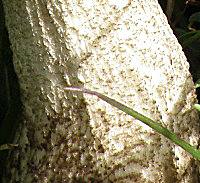 |
StemThe stipe or stem is 4-12cm tall and typically 0.8 to 1.2cm in diameter, tapering in slightly towards the apex, has a white or pale grey surface covered with buff scales near the apex grading o brown scales near to the stem base. When cut, the pale stem flesh turns vinaceous near the apex and blueish towards th stem base. |
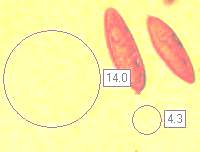 |
SporesFusiform with a conical apex, smooth, thin-walled,13-18.5 x 4-6µm, inamyloid. Spore printOchraceous-brown. Note: Other microscopic characters may have to be examined before a specimen can be conclusively recorded as Leccinum pseudoscabrum . Of particular significance are the caulocystidia and the hyphal structure of the pileipellis. See the key by Geoffrey Kibby, in the References section below. |
Odour/taste |
Not distinctive. |
Habitat & Ecological role |
Mycorrhizal, most often beneath hornbeam but less commonly with hazel. |
Season |
June to October in Britain and Ireland. |
Similar species |
Leccinum scabrum, a larger bolete which usually occurs under birch, generally has a browner cap but is occasionally yellowish brown. |
Culinary Notes
Leccinum pseudoscabrum is generally considered to be an edible mushroom, but it is not in the first division of boletes and its small size and relative scarcity make it hardly worth seeking if you are looking for mushrooms to eat.
Reference Sources
Pat O'Reilly, Fascinated by Fungi, 2016.
Henk C. den Bakker, Barbara Gravendeel & Thomas W. Kuyper (2004). An ITS phylogeny of Leccinum and an analysis of the evolution of minisatellite-like sequences within ITS1; Mycologia, 96(1), 2004, pp. 102-118.
British Boletes, with keys to species, Geoffrey Kibby (self published) 3rd Edition 2012.
British Mycological Society English Names for Fungi
Dictionary of the Fungi; Paul M. Kirk, Paul F. Cannon, David W. Minter and J. A. Stalpers; CABI, 2008
Taxonomic history and synonym information on these pages is drawn from many sources but in particular from the British Mycological Society's GB Checklist of Fungi.
Fascinated by Fungi. Back by popular demand, Pat O'Reilly's best-selling 450-page hardback book is available now. The latest second edition was republished with a sparkling new cover design in September 2022 by Coch-y-Bonddu Books. Full details and copies are available from the publisher's online bookshop...

